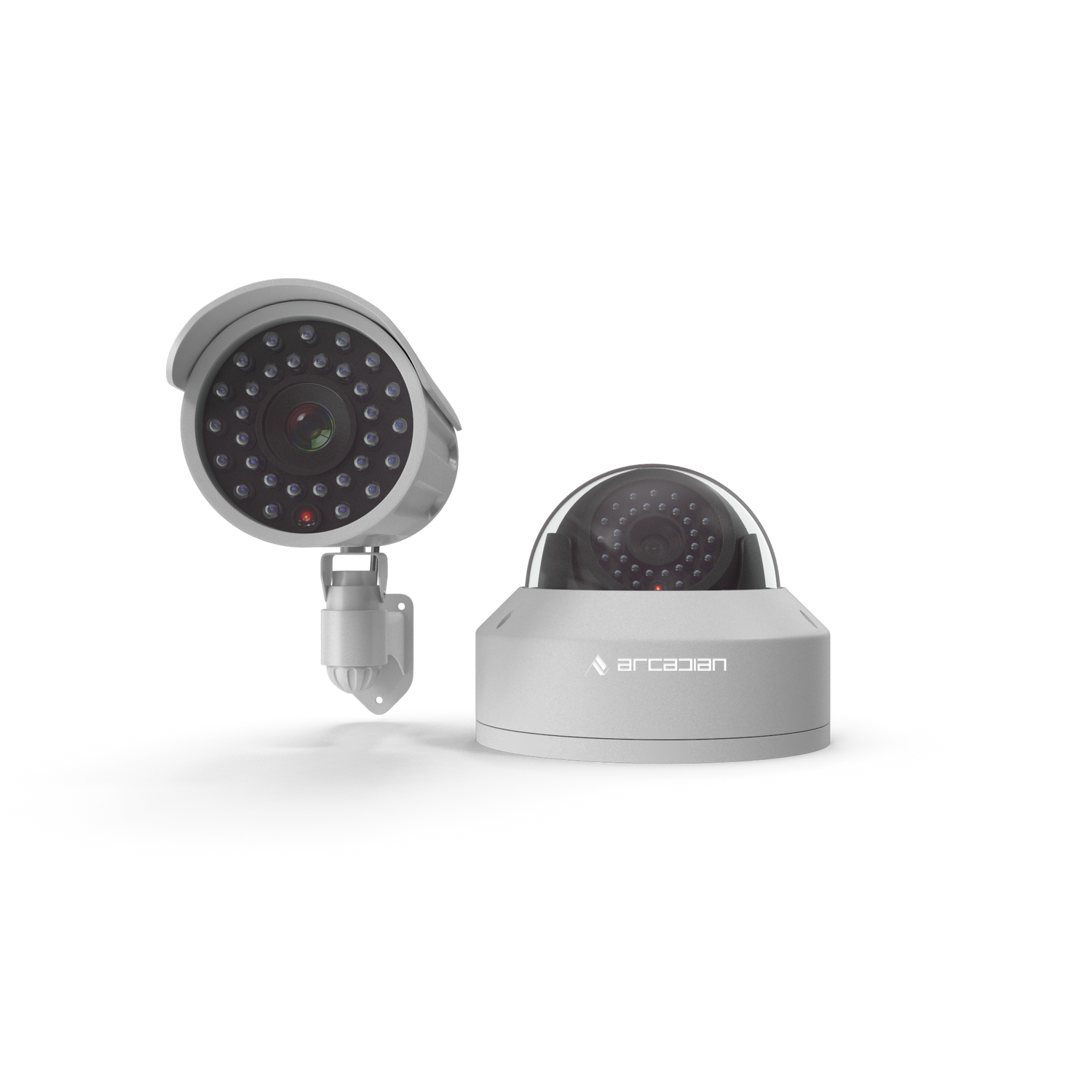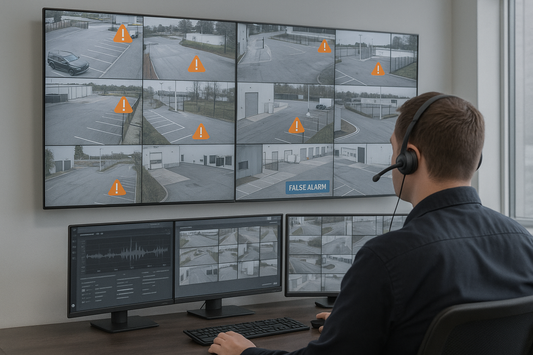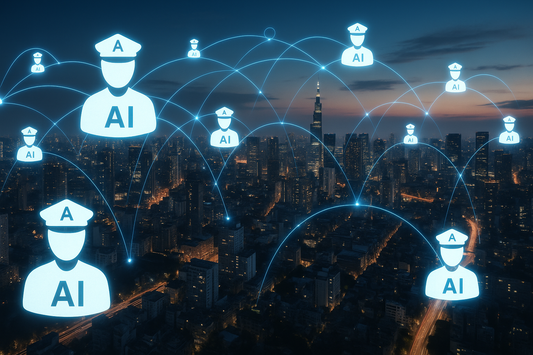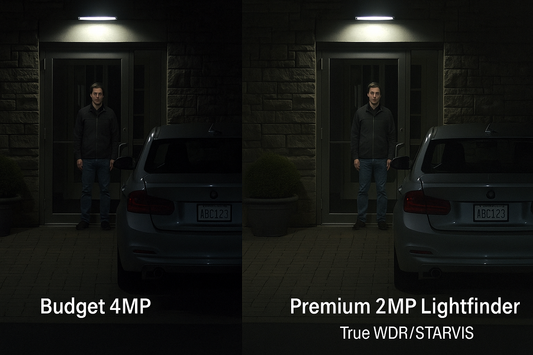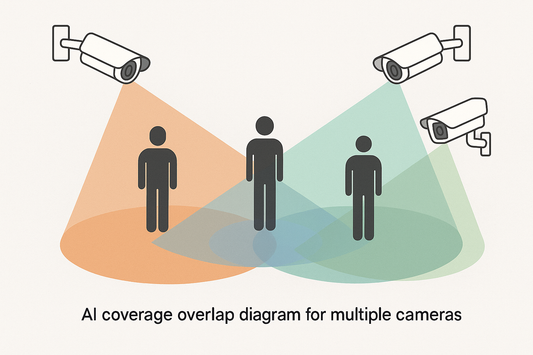Why Small Businesses Should Avoid NVR Systems in 2025
Introduction: Outdated Technology, Big Risks for Small Businesses For years, Network Video Recorder (NVR) systems were the default choice for video surveillance. But as the business landscape evolves, small businesses are realizing that traditional NVR setups can no longer keep up with modern demands. High costs, maintenance issues, and limited...

Introduction: Outdated Technology, Big Risks for Small Businesses
For years, Network Video Recorder (NVR) systems were the default choice for video surveillance. But as the business landscape evolves, small businesses are realizing that traditional NVR setups can no longer keep up with modern demands. High costs, maintenance issues, and limited features make NVR systems a liability rather than an asset—especially in 2025, when cloud-based security cameras offer a smarter, more efficient alternative.
This blog explores why small businesses should rethink NVR systems and embrace cloud-based solutions to stay secure, scalable, and competitive.
1. NVR Systems Come with High Upfront Costs
The Problem:
- Expensive Hardware: NVR systems require recorders, hard drives, and compatible cameras, with upfront costs for a 10-camera system averaging $10,000–$15,000.
- Installation Fees: Professional setup can add another $1,000–$5,000, depending on the system's complexity.
- Storage Upgrades: Expanding storage for high-resolution footage or longer retention periods incurs additional costs.
Why Cloud Cameras Are Better:
- No Recorders or Hard Drives Needed: Cloud cameras eliminate bulky, costly hardware.
- Minimal Setup Costs: Installation is simple and much cheaper.
- Pay-as-You-Go: With subscription plans starting at $20 per camera per month, cloud systems offer flexibility and cost predictability.
Example:
A small retail store avoided a $12,000 upfront investment by opting for a cloud-based system, paying just $200/month instead.
2. Maintenance Costs Add Up Quickly
The Problem:
- Frequent Repairs: Hard drives in NVR systems fail every 3–5 years, requiring costly replacements.
- Software Updates: Manually updating firmware increases IT labor costs and risks security gaps if neglected.
- System Downtime: Hardware failures result in unmonitored locations and potential data loss.
Why Cloud Cameras Are Better:
- Zero Maintenance: No on-site hardware means fewer points of failure.
- Automatic Updates: Cloud providers handle updates seamlessly, keeping your system secure and efficient.
- Built-In Redundancy: Cloud systems are designed for continuous uptime with no service interruptions.
Stat: Businesses save 40% annually on maintenance costs with cloud-based solutions (Source: Deloitte).
3. NVR Systems Lack Scalability
The Problem:
- Limited Capacity: Adding cameras often means upgrading or replacing the entire NVR system.
- Multi-Location Challenges: Managing separate systems for different sites is inefficient and costly.
- Growth Barriers: Expanding security coverage requires significant upfront investments, which can strain small business budgets.
Why Cloud Cameras Are Better:
- Unlimited Scalability: Add or remove cameras easily without replacing infrastructure.
- Centralized Management: Monitor all locations from a single dashboard, no matter how many sites you have.
- Flexible Plans: Scale your system as your business grows, adjusting costs accordingly.
Example:
A franchise with three locations saved $20,000 by scaling its cloud-based system across all sites instead of purchasing separate NVR setups.
4. Outdated Features in an AI-Driven World
The Problem:
- Basic Functionality: NVR systems are limited to recording and storing footage, leaving businesses reliant on manual monitoring.
- Lack of Analytics: Advanced features like motion detection, facial recognition, and heat mapping require costly third-party integrations.
- No Real-Time Alerts: Traditional systems don’t notify users of incidents, leading to delayed responses.
Why Cloud Cameras Are Better:
- AI-Powered Analytics: Detect suspicious activity, track customer behavior, and analyze patterns in real time.
- Smart Alerts: Receive instant notifications for security breaches, loitering, or unauthorized access.
- Operational Insights: Use heatmaps and traffic data to optimize store layouts, improve customer flow, and boost sales.
Stat: Small businesses using AI-driven cloud cameras report a 30% reduction in theft and a 15% increase in operational efficiency (Source: McKinsey).
5. Vulnerability to Data Loss and Breaches
The Problem:
- On-Site Storage Risks: Footage stored on hard drives is vulnerable to theft, fire, water damage, and tampering.
- Cybersecurity Weaknesses: Many NVR systems lack modern encryption, making them targets for hackers.
- Data Loss: Once an NVR is compromised, the footage is gone forever.
Why Cloud Cameras Are Better:
- Redundant Storage: Video footage is securely backed up across multiple cloud servers, ensuring no data is ever lost.
- End-to-End Encryption: Cloud systems protect your data during transmission and storage.
- Disaster Recovery: Access footage even if your physical location or hardware is damaged.
Example:
A warehouse avoided losing critical footage during a flood because their cloud system automatically backed up recordings to a secure server.
6. Hidden Costs Drain Resources
The Problem:
- Unplanned Repairs: Hardware failures and IT support can result in unexpected bills.
- Expansion Costs: Adding more cameras or upgrading storage drives significantly increases expenses.
- Energy Costs: Running an NVR system consumes more electricity compared to cloud-based alternatives.
Why Cloud Cameras Are Better:
- Predictable Pricing: Subscription fees cover storage, updates, and maintenance, making budgeting easier.
- No Hardware Upgrades: Cloud systems adapt to your needs without requiring additional purchases.
- Energy Efficient: With no on-site recorders, cloud systems consume less energy, reducing utility costs.
Cost Comparison Over 5 Years:
| Expense | NVR System | Cloud Cameras |
|---|---|---|
| Upfront Costs | $12,000+ | $1,000 (minimal setup fees) |
| Maintenance | $5,000 | $0 |
| Storage Upgrades | $3,000 | Included |
| Energy Costs | $1,000+ | Minimal |
| Total Costs | $25,000+ | $12,000 |
7. Small Businesses Need Flexibility
The Problem:
- Locked-In Investments: NVR systems require large upfront costs, leaving little room for changes.
- Limited Customization: Businesses must work within the constraints of their existing hardware.
- Hard to Cancel: Selling used NVR systems rarely recoups the initial investment.
Why Cloud Cameras Are Better:
- Cancel Anytime: Cloud subscriptions allow businesses to cancel or adjust plans as needed.
- Tailored Features: Choose the features and storage plans that match your business’s specific needs.
- Risk-Free Testing: Try cloud systems with minimal risk before committing to long-term use.
Example:
A seasonal business saved $1,000 annually by pausing its cloud subscription during the off-season.
Conclusion: Cloud Cameras Are the Future of Small Business Security
In 2025, relying on outdated NVR systems is a risky and expensive choice for small businesses. From high upfront costs to maintenance headaches and limited features, traditional systems simply can’t keep up with modern demands. Cloud-based security cameras offer a smarter, more affordable alternative with scalability, advanced features, and long-term savings.
Don’t let outdated technology hold your business back.
👉 Contact Arcadian.ai today to learn how cloud cameras can transform your security strategy and save you money.
Visit Us on Social Media
💼 LinkedIn
🌐 Facebook
📸 Instagram
🎥 YouTube
🎬 TikTok
🐦 X

Security is like insurance—until you need it, you don’t think about it.
But when something goes wrong? Break-ins, theft, liability claims—suddenly, it’s all you think about.
ArcadianAI upgrades your security to the AI era—no new hardware, no sky-high costs, just smart protection that works.
→ Stop security incidents before they happen
→ Cut security costs without cutting corners
→ Run your business without the worry
Because the best security isn’t reactive—it’s proactive.
